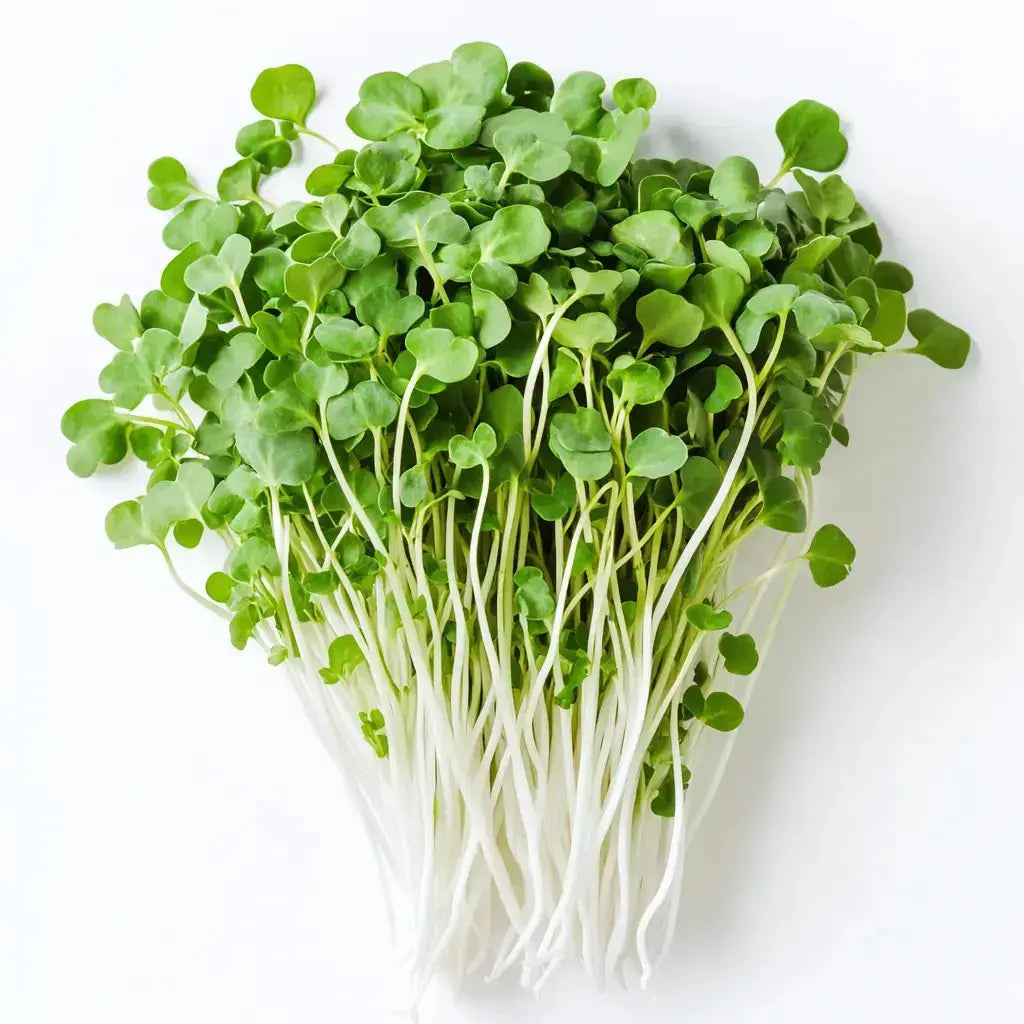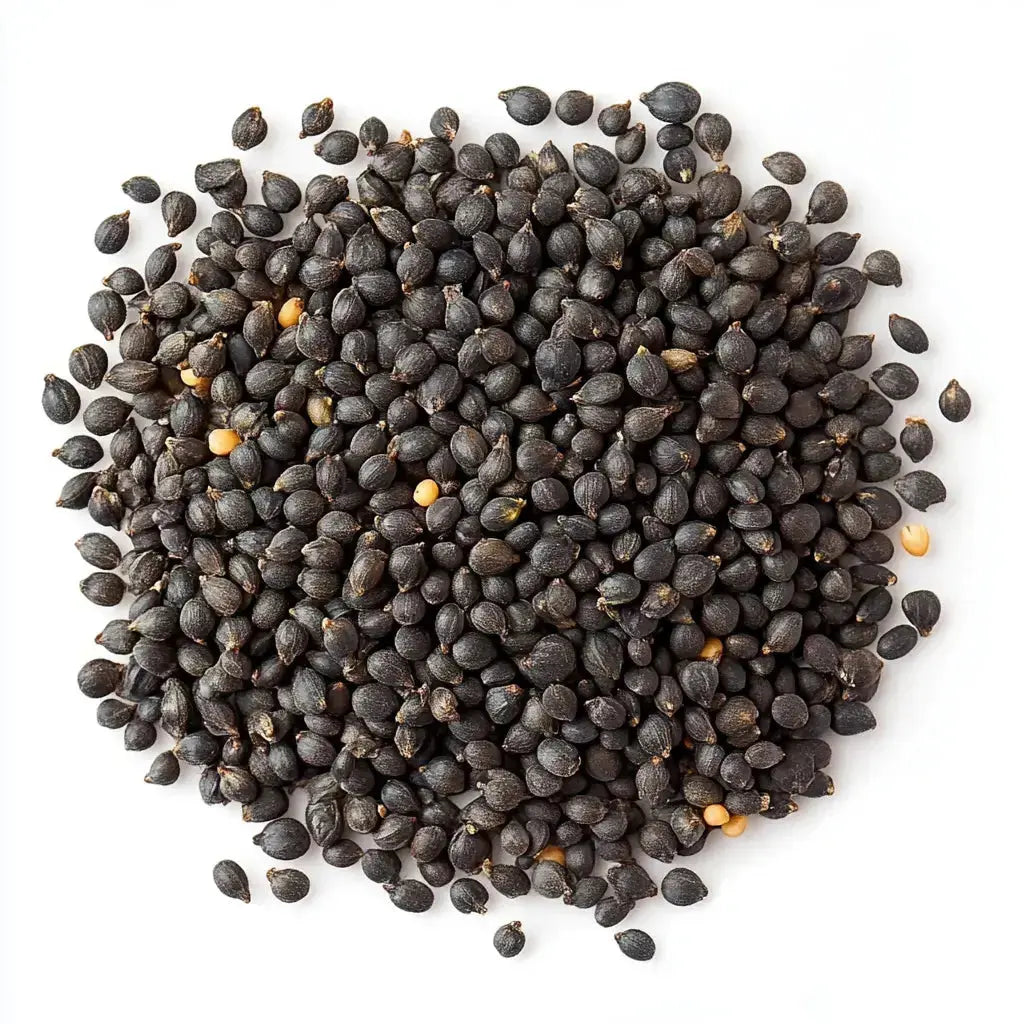

What Are Sunflower microgreen seeds
Flavor & Visual Appeal: China Rose radish microgreens are as tasty as they are beautiful. They have a distinct peppery flavor that’s a tad milder than the punch of daikon radish micros, making them very approachable. On first bite, you get that familiar radish zing, but it’s quickly accompanied by a slight sweetness and a fresh green finish. This nuanced flavor means you can use more of them without overwhelming a dish. What truly sets China Rose apart is the visual appeal: the stems come in shades of pink and sometimes light purple, while the leaves are a vibrant bright to deep green. This contrast is striking – imagine a cluster of pink and green microgreens perched atop a salad or soup. They inevitably draw oohs and aahs at the dinner table. Because of their color, these microgreens are often used in fine dining to add a pop of color. For example, a simple potato salad or egg salad sandwich suddenly looks gourmet with a sprinkling of China Rose radish micros. They also look lovely on canapés, such as smoked salmon bites or even sprinkled around a cheese plate. In terms of texture, China Rose radish micros are crisp and juicy, similar to other radish micros. The stems especially have a nice snap. The combination of that crunch, the spice, and the color makes eating them a joy – you feast with your eyes and then your palate.
Health & Nutrition: Much like daikon radish microgreens, China Rose radish microgreens offer an impressive nutritional profile. They deliver lots of vitamin C, which is great for your immune system and skin, and vitamin K1, which is important for blood clotting and bone health. The pink hue in the stems is due to anthocyanins, which are antioxidants also found in beets, berries, and purple cabbage – these compounds support heart health and may have anti-inflammatory effects. So in a way, China Rose radish combines the benefits of green leafy micros with some benefits of colorful berries! Additionally, you get a good amount of folate (B9) and vitamin B6 from radish micros, supporting energy metabolism and brain health. They are rich in potassium, helping regulate blood pressure and hydration. Calcium and magnesium present in them contribute to bone and muscle function. And let’s not forget those special radish compounds: glucosinolates and isothiocyanates (like sulforaphane precursor). These compounds have been researched for aiding liver detoxification and providing cancer-fighting potential. In traditional Chinese medicine, radish (including the China Rose variety) is considered beneficial for digestion and lung health. Microgreens concentrate some of these nutrients, so you’re getting a dense dose of goodness. For the calorie-conscious: radish microgreens are extremely low in calories and virtually fat-free, yet they deliver a satisfying flavor punch, making them an ideal addition to flavor up healthy meals. There’s also dietary fiber in these seedlings, which aids digestion. Another interesting tidbit: radish microgreens have been noted to contain antioxidant levels several times higher than mature radish roots, so you’re actually doing better nutritionally by eating the greens! In summary, China Rose radish microgreens aren’t just a pretty face – they contribute significantly to a nutrient-rich diet and can help support immunity, detox, and overall vitality.
Cultivation Background: The China Rose radish is an heirloom radish variety originally from Asia (often associated with China, as the name suggests). It’s known for its rose-colored skin and white flesh when grown to full size. As a microgreen, it brings that genetic coloration into the stem. Gardeners have grown China Rose radishes for centuries for their winter hardiness and flavor. In microgreen form, we bypass the root and enjoy the sprout. Deliseeds’ China Rose radish seeds are chosen for their high germination and vibrant color expression. You might notice when you sow the seeds, they have a reddish-brown color – radish seeds can vary slightly in shade, but China Rose seeds look much like other radish seeds (tiny, round, reddish-brown). It’s upon sprouting that the pink stem becomes evident. If you grow them under very low light or too hot conditions, the color might be lighter; under cooler temps and good light, you get deep pink pigmentation. This is something microgreen growers sometimes play with – for instance, giving a day or two of cooler temperature to enhance color. Regardless, they tend to look beautiful under normal conditions anyway.
How to Grow Broccoli Microgreens?
Use the same approach as for other radish microgreens. Prepare a tray with moist soil or a growth pad. Scatter the China Rose radish seeds evenly. You can sow them fairly densely – about 4 g per 10×10 cm (around 40–50 g for a full tray, as these seeds are tiny and you want a carpet of microgreens). Because China Rose seeds are very similar in size to daikon radish seeds, the seeding rate and method are essentially the same. No need to pre-soak the seeds (they germinate quickly on their own). After broadcasting the seeds, give a light misting to settle them. They might have a slight pinkish hue on the seed coat, but that’s just the seed color; the actual stems to come will be pink.
Cover the seeds with a lid or another tray to keep them dark. Duration is ~3 days. During this time, check once a day and mist lightly if dry. Because we sowed densely, ensure the seeds stay in place and moist. By the end of day 2, you’ll likely see many seeds cracking open with white roots. By day 3, most should have germinated and started pushing up. You may see the cover tray lifting – that’s your sign they’re ready for light. If a few seeds stick to the cover when you remove it, just flick them back onto the soil.
After ~3 days in the dark, remove the cover and expose the microgreens to light. Instantly, the pale yellow sprouts will begin to turn green and those stems will show their pink coloration. Provide ample light (a sunny window sill or fluorescent/LED grow lights ~12-16 hours per day). Grow at room temperature (18–22°C ideally). Note: As mentioned, slightly cooler nights (around 15°C) can make colors more vivid, so if you have a way to grow them in a cool spot, you’ll get intense pink stems. But even at normal room temp, they’ll be nicely pink. Watering should be done to keep soil consistently moist – radish microgreens grow fast and can dry out if not monitored. Bottom-watering works well to avoid splashing soil on those pretty stems. Just add water to a bottom tray and let the soil pad soak it up. If top watering, use a gentle hand. By day 5, your China Rose micros might be ~5 cm tall already. They tend to grow upright and not too leggy. Ensure some airflow if the weather is humid to prevent any fungus, though it’s uncommon for radish.
These microgreens reach harvest maturity around day 6 to 8 typically. You’ll know they’re ready when they have a canopy of green leaves and robust pink stems ~7–8 cm tall. If you wait till day 8–10, they might start showing tiny true leaves and the flavor will intensify (and possibly become a tad harsher). Most people harvest radish micros before the true leaves, when the cotyledons (the first leaves) are at their widest and the flavor is tangy but still fresh. To harvest, use sharp scissors or a knife and cut just above the soil line. Harvesting in the morning or when the plants are well-hydrated yields crisp greens. You’ll get handfuls of candy-pink and green microgreens – quite satisfying! If not using immediately, gently rinse and dry them, then refrigerate. They keep about a week in the fridge if dry. However, note that anthocyanin-rich stems (like these pink ones) can sometimes bleed color slightly after cutting, especially if pressed; handle them gently to avoid bruising which could cause a bit of pink juice.
Tips & Troubleshooting
How can I tell if the white fuzz on my broccoli microgreens is root hairs or mold?
Broccoli microgreens commonly display white fuzzy root hairs near the base, especially if they get thirsty. These can be mistaken for mold. A simple way to tell: mist with water – if the fuzz disappears or clumps to the root, it’s just root hairs (normal). If it stays like a spider-web and spreads across the soil, that’s mold. To avoid mold, ensure proper airflow and don’t over-seed too densely. Broccoli is forgiving, but any stale air or excessive moisture can invite fungus. A small fan blowing gently over the greens and using the bottom-water method keep mold at bay.
Why are some of my broccoli microgreens collapsing at the base, and how can I prevent it?
If you notice some seedlings collapsing at the base, it could be damping off (a fungus attacking the stem). Prevent this by using clean soil and trays and not overwatering. Once under lights, avoid big water droplets sitting on stems overnight. Cinnamon powder is a natural anti-fungal – some growers sprinkle a little on the soil surface at seeding as a precaution.
Why are my broccoli microgreens growing tall and floppy with pale stems?
Broccoli microgreens are naturally a bit tall, but extremely thin, pale stems mean not enough light. If your sprouts are flopping over, shorten the blackout period and get them under bright light sooner. Also check your seeding density – overly crowded seedlings can stretch more. Proper light and spacing produces sturdier, upright greens.
What causes a bitter or strong taste in broccoli microgreens, and how can I make them milder?
Broccoli microgreens are usually mild. A harsh or bitter flavor can result if they were grown too long (past the ideal harvest) or under stressful conditions (too hot or lack of water). Harvesting at the cotyledon stage yields the mildest taste. Also, growing in cooler temperatures (18–20 °C) tends to produce milder, sweeter greens, whereas high heat might increase the “brassica bite.” If you find the taste too strong, try harvesting a day earlier next time, or mixing broccoli micros with a milder lettuce microgreen to balance the flavor.
Can I regrow broccoli microgreens after harvesting them once?
After cutting, broccoli microgreens typically do not regrow for a reliable second harvest (they have expended their seed energy). It’s best to compost the spent medium (great for the garden) and start a fresh batch with new seeds for continuous production. With such a quick crop cycle, you can stagger plantings a few days apart to have a continuous supply of fresh broccoli microgreens.
Why Choose Deliseeds?
-
Certified Organic & Non-GMO
Safe, high-germination seeds. Check our certificates.
-
Fast EU Shipping
Orders dispatched within 24h. Delivery times 1-5 working days.
-
100% Satisfaction Guarantee
If you're not satisfied - you'll get a replacement or a refund.
-
Expert Support
We mean it! You get our personnal support to help you succeed.




